Companion planting is an organic method of disease and pest control accomplished by planting two or more types of plants, which have advantageous symbiotic relationships, near each other within a designated or confined garden space to the benefit of one or more of the neighboring plants.
Selecting the right “good neighbors” for okra reduces unwanted insect predators, attracts beneficial insects, promotes pollination, enriches the soil, and adds diversity and visual interest to the garden.
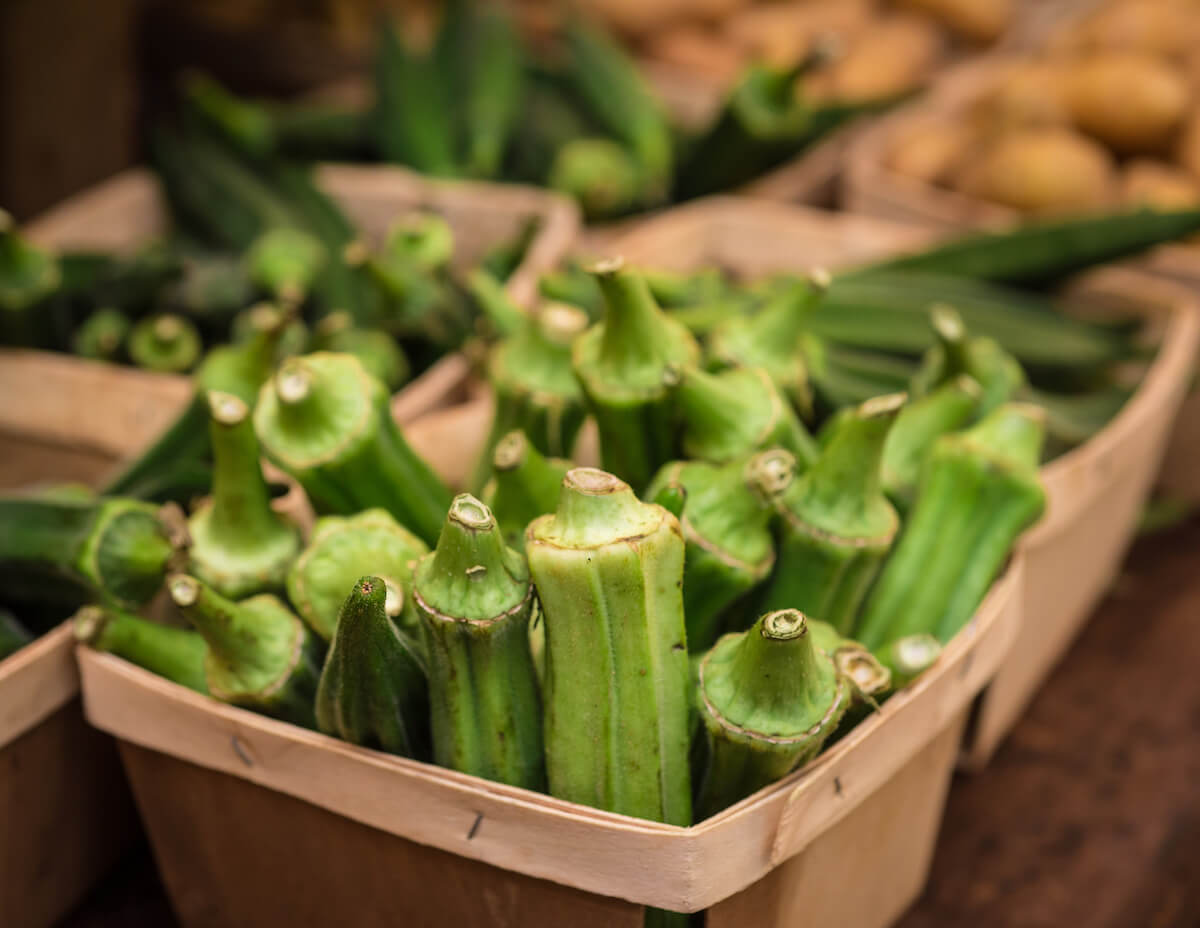
Best Companion Plants For Okra
Plant a wide variety of both sweet and hot peppers between okra plants. Strong and sturdy, okra plants act as a “windbreak” for the more fragile pepper plants. In turn, pepper plants repel cabbage worms, which like to munch on okra.
Plant sunflowers around the perimeter of your garden to add a splash of color and as a method of organic insect control. Sunflowers act as a powerful trap for aphids. Intensely attracted to the sunflowers, they leave your okra, tomatoes, and pepper plants alone.
Plant basil around the base of your okra plants. Plant at least six inches apart so the basil can spread out. Basil repels whiteflies, aphids, and spider mites.
When lettuce and okra are planted together, the okra provides shade for the lettuce while the lettuce acts as an attractive, edible groundcover that chocks out weeds around the base of the okra plant. Because lettuce has a very shallow root system, it does not compete with okra, peppers or tomatoes for nutrients.
Okra (Abelmoschus esculentus) is a tall-growing annual vegetable that flourishes in warm climates, during the hottest days of summer.
While okra can be grown in most United States Plant Hardiness Zones, it is by tradition a southern plant that does best in warm, moist soils. This popular vegetable can be found in both urban and rural homestead gardens as it is easy to grow and is attractive throughout the growing season due to its dense green foliage and beautiful flowers.
For homesteaders who sell their surplus crop production at the local farmers market, okra can return an income over an extended harvest period of eight to ten weeks.
Best Okra Varieties
Okra is in the Malvaceae (mallow) family of plants, which includes Rose of Sharon, hollyhocks, cotton, and hibiscus. Native to the Nile Valley, okra cultivation by Egyptians dates back to the 12th century B.C. From there, the popular plant spread throughout the Mediterranean, India, and Africa.
For homestead garden cultivation, proven producing varieties include Labadi, Lady Finger, Bombo, Quim, Astern, and Clemson Spineless.
For ease of picking, dwarf varieties are popular choices. Park’s Candelabra Branching, Annie Oakley, and Louisiana Green Velvet are low-growing varieties with dependable heavy yields: ready for picking in 50-to-52 days.
Planting Tips For Okra
Okra grows best in a full-sun location in nutrient-rich loamy soil with a pH of 6.0 or higher. Take a soil sample to your local county extension service to test pH and fertility levels. Amend as recommended. Choose an area in the garden with good moisture retention. Okra will grow quite well in heavier soils but cannot tolerate compacted hardpan, poorly aerated, or soggy soil.
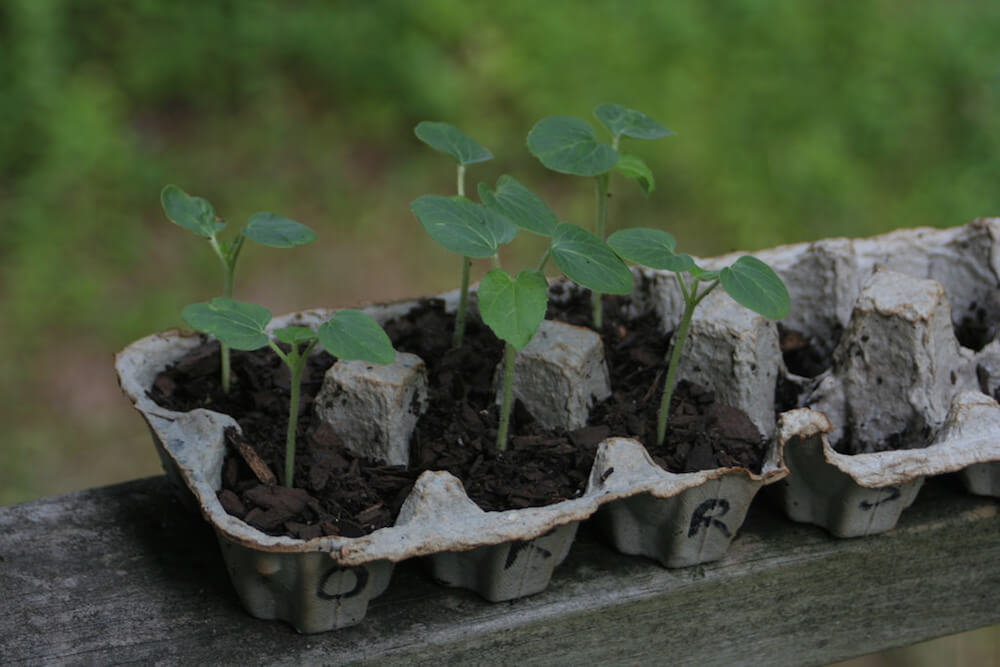
To prepare the garden for planting okra, cultivate the soil to a depth of ten inches, breaking up dirt clods and removing roots, rocks, and weeds. Enhance the soil by incorporating a generous amount of organic garden compost, well-aged herbivore manure (cow, sheep, goat, horse, llama) or a balanced 10-20-10 fertilizer.
Plant okra in the spring, after danger of frost has passed. The plant thrives in warm soil. For the best results, delay planting until the soil has warmed to 50 degrees Fahrenheit. For an abundant fall crop, plant okra three months before the first autumn frost.
While you can start okra by sowing seed directly in the soil, gardeners located in climates with cool, damp springs, get a jump on the growing season by starting indoors four to six weeks before spring planting time.
Related Post: How To Grow, Maintain, And Harvest The Okra Plant
Plant okra seeds one-inch deep. If sowing directly in soil, plant seeds two-to-three inches apart, thinning to one foot apart as the seeds develop. Transplant when seedling are three-to-four inches tall.
Okra is a tall plant with some varieties exceeding six feet tall at maturity. To avoid shading out other crops, plant okra at the north end of the garden, near other tall plants such as corn. Plant seedlings approximately one foot apart in rows spaced two to three feet apart.
Okra grows vigorously during hottest summer days. While okra can tolerate drought conditions, the hardy plant produces the highest yields when provided with a minimum of one inch of water per week.
Pest Problems
Okra pest problems include cabbage loppers, aphids, stink bugs, and nematodes. Washing the plant in soapy water and rinsing with a steady stream of water can remove aphids. The majority of pests can be controlled by organic gardening methods.
The best method of organically controlling nematodes is to implement a practice of crop rotation, planting the soil where you have grown plants that attract nematodes with small grains, grasses, chives, onion and garlic that prevent a build-up of nematodes.
Companion plants help repel unwanted crop predators in the homestead garden.
Crop Rotation
Because okra is quite susceptible to damage by nematodes, employ a program of crop rotation. Okra should not be planted in soil previously utilized to grow vine crops such as sweet potatoes and squash as these crops tend to increase nematode population in soil.
Nematodes feast on young okra roots, causing wilt and galls on the roots, which diminishes fruit yield. Control nematodes with EPA approved nematicides.
Moisture Requirements
Keep the soil surrounding okra plants weed free and apply additional organic compost after the first harvest. When weeding by handpicking or hoeing, be careful not to damage plant roots.
Harvesting And Eating Okra
As the plant matures, harvest young pods when they are two to three inches long. Pods are usually ready for harvesting within ten days of flowering. Use garden scissors to clip immature pods every other day to encourage crop production.
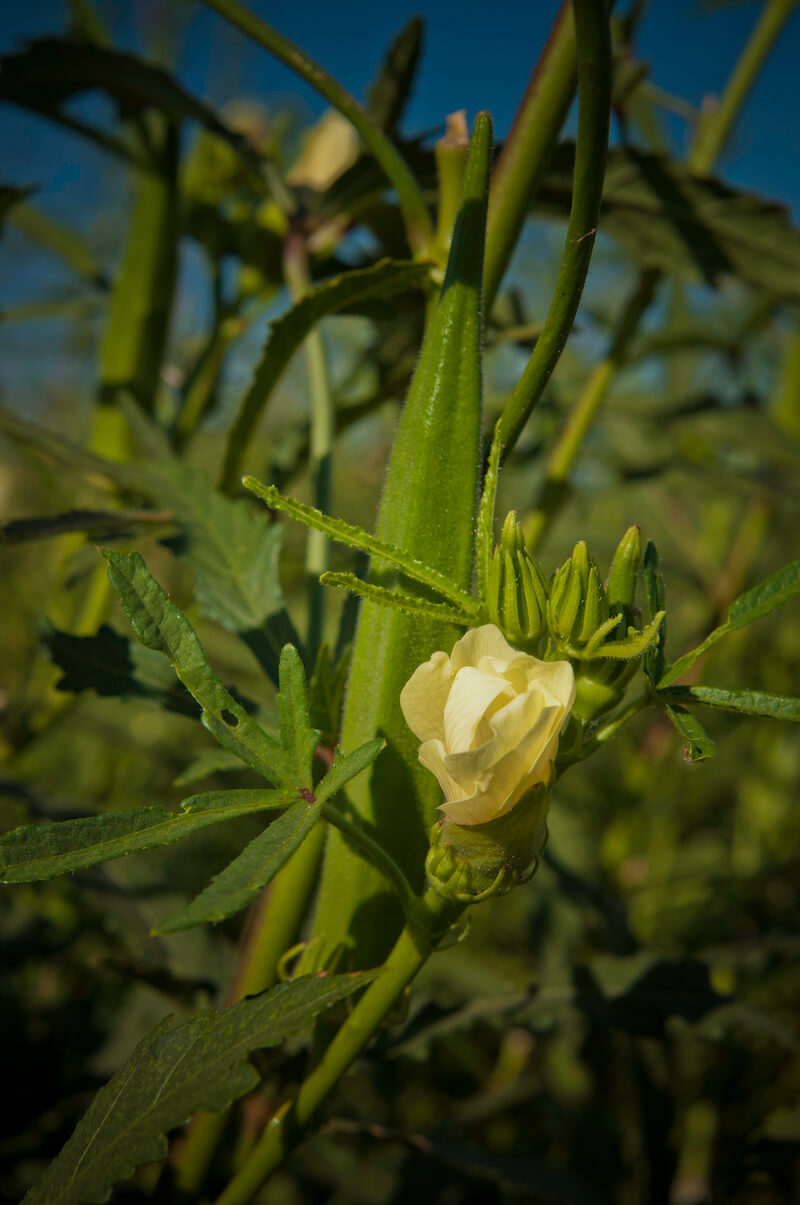
Do not leave old pods on okra plants as this will sap energy from the plant and reduce crop yield.
Fresh okra can be stored in the refrigerator crisper for up to four days. Discard any pods that become bruised or discolored. To freeze okra, blanch before freezing to preserve freshness and flavor.
The plant contains a mucilaginous juice prized for its thickening quality made famous by its use in Louisiana Creole gumbo dishes. Okra has a mild, and somewhat bland taste, similar in flavor to eggplant.
The tender, young seedpods are the edible part of the okra plant. Immature pods are served as a boiled, fried, or pickled vegetable; adding flavor to salads, soups, sauces, and stews. Okra is low in calories, high in fiber, and a good source of Vitamin A.
Best Ever Seafood Gumbo
My sister Bonnie, a gourmet cook and longtime resident of New Orleans, shared with me her favorite hot and spicy gumbo recipe.
Ingredients
- One cup of white flour
- One cup of browned bacon bits and drippings
- One cup of chopped red sweet pepper
- One cup of chopped green sweet pepper
- One cup of finely chopped celery
- One cup of chopped white onion
- Two tablespoons of freshly minced garlic
- Two tablespoons of minced fresh cilantro
- One pound of ground Italian sausage
- Three cups fresh sliced okra (Canned or frozen okra may be substituted.)
- Four quarts of water
- Eight beef bullion cubes
- Three tablespoons Worcestershire sauce
- Two tablespoons soy sauce
- One pound lump crabmeat
- 4 pounds uncooked shrimp – deveined and peeled
- One tablespoon of freshly minced thyme leaves or half teaspoon dried thyme
- One quart of canned stewed tomatoes
- One six-ounce can of tomato paste
- Sea salt to taste
- Three tablespoons bacon drippings
- Two tablespoons gumbo file
- Three teaspoons of hot pepper sauce
- One teaspoon Cajun dried seasoning powder
- Three bay leaves
- One-half teaspoon of fresh ground cardamom
- Three tablespoons white rice wine vinegar
- Two tablespoons brown sugar
Directions
- Brown crumbled Italian sausage in a skillet. Remove from heat and set aside.
- Prepare a roux by cooking the flour, bacon bits, and bacon drippings over medium heat in a heavy saucepan until the roux is smooth and a rich dark brown. Stir constantly to prevent burning and to obtain a smooth consistency.
- Add chopped sweet peppers, celery, onion and crumbled Italian sausage to the roux and cook on low heat approximately 10-minutes until the vegetables are tender. Remove from heat and set aside.
- In the meanwhile, as the roux is simmering, in a large stock or pasta pot bring water to a boil. Add bullion cubes, stirring until boullion is completely dissolved. Reduce heat to simmer. Add remaining spices, herbs, stewed tomatoes, tomato paste, brown sugar, and seasonings.
- To this mixture, add roux with sausage and vegetables. Simmer mixture over low heat for one hour, stirring frequently.
- Melt three tablespoons of bacon drippings in a skillet over medium heat, Add okra, shrimp, crabmeat, and rice wine vinegar. Cook mixture for ten minutes or until okra, shrimp, and crabmeat are tender.
- Add okra and seafood mixture to the gumbo pot and continue to simmer over low heat for an additional two hours to meld flavors.
- Serve with a tossed green salad, crusty French rolls, and enjoy.
References:
- Okra (University of Illinois Extension)
- How To Grow Okra (Texas A & M Extension Services)

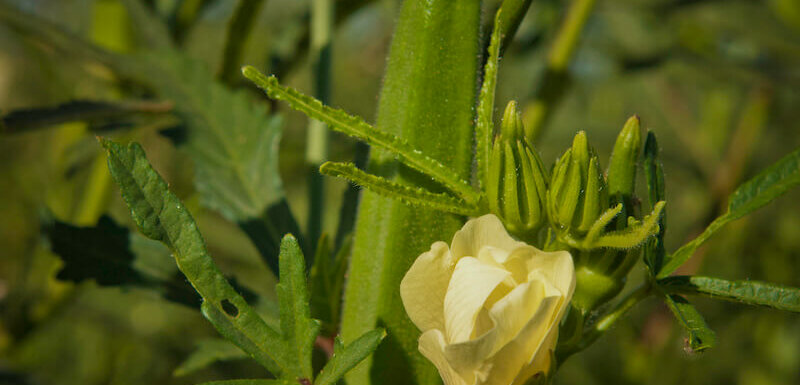


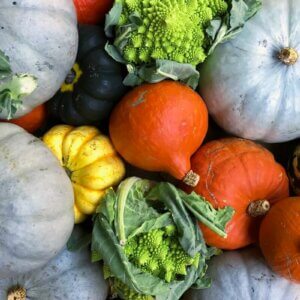



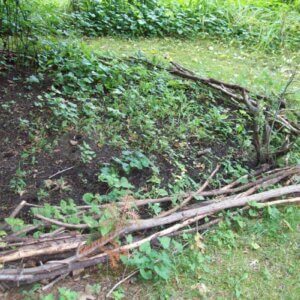

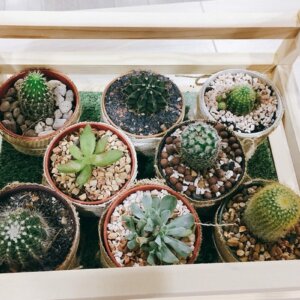




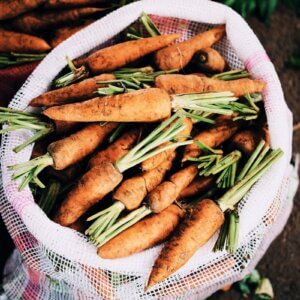



















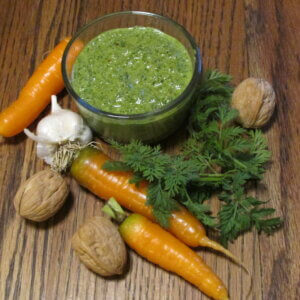




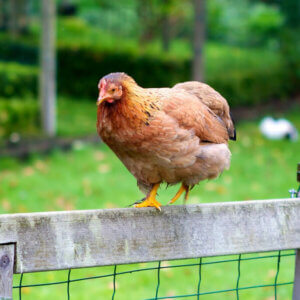

About to plant okra this week. Thanks for sharing.
So can I interplant corn with okra?
Are you referring to the longer overgrown okra as ‘immature ‘ okra in your article?
The immature pods would be the young tender pods you cut and eat. The over mature pods are the ones that get past you and can become woody
fried okra is a favorite vegetable in the South. it is a must have in the vegetable garden.
Thank you for the info on growing okra but I do have a question for you. Your sister is not a NOLA or Louisiana native is she?
Clearly not, though the roux looks interesting. Cooking shrimp or crab meat for two hours is a sin, isn’t it?
Has anyone tried growing pumpkins interplanted with okra? I have a limited space in a community garden.
Yes, you can plant pumpkins with okra. Pumpkins are squash and squash, beans, peas are good companion plants for okra as well as corn. Hot and sweet peppers also.